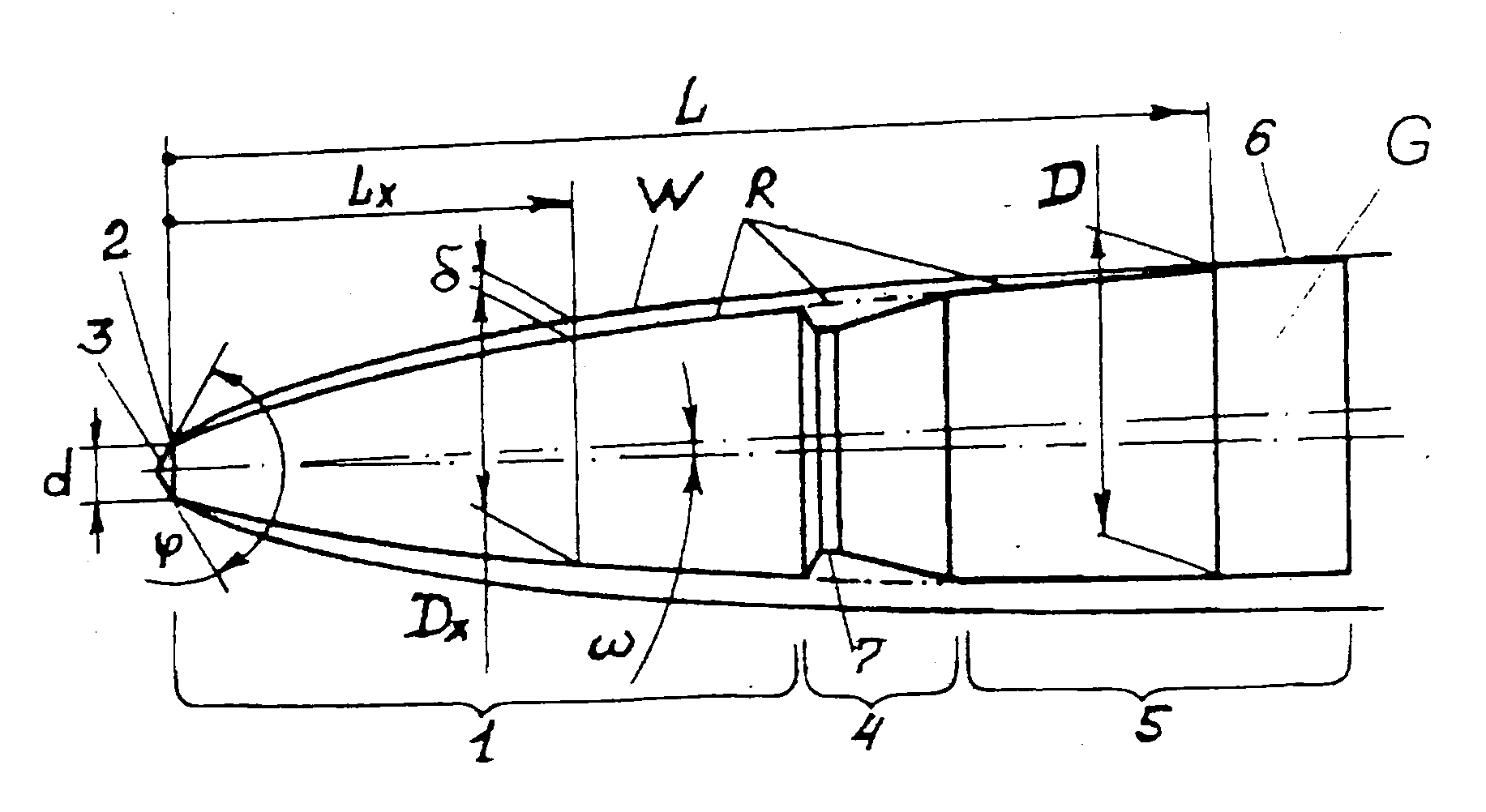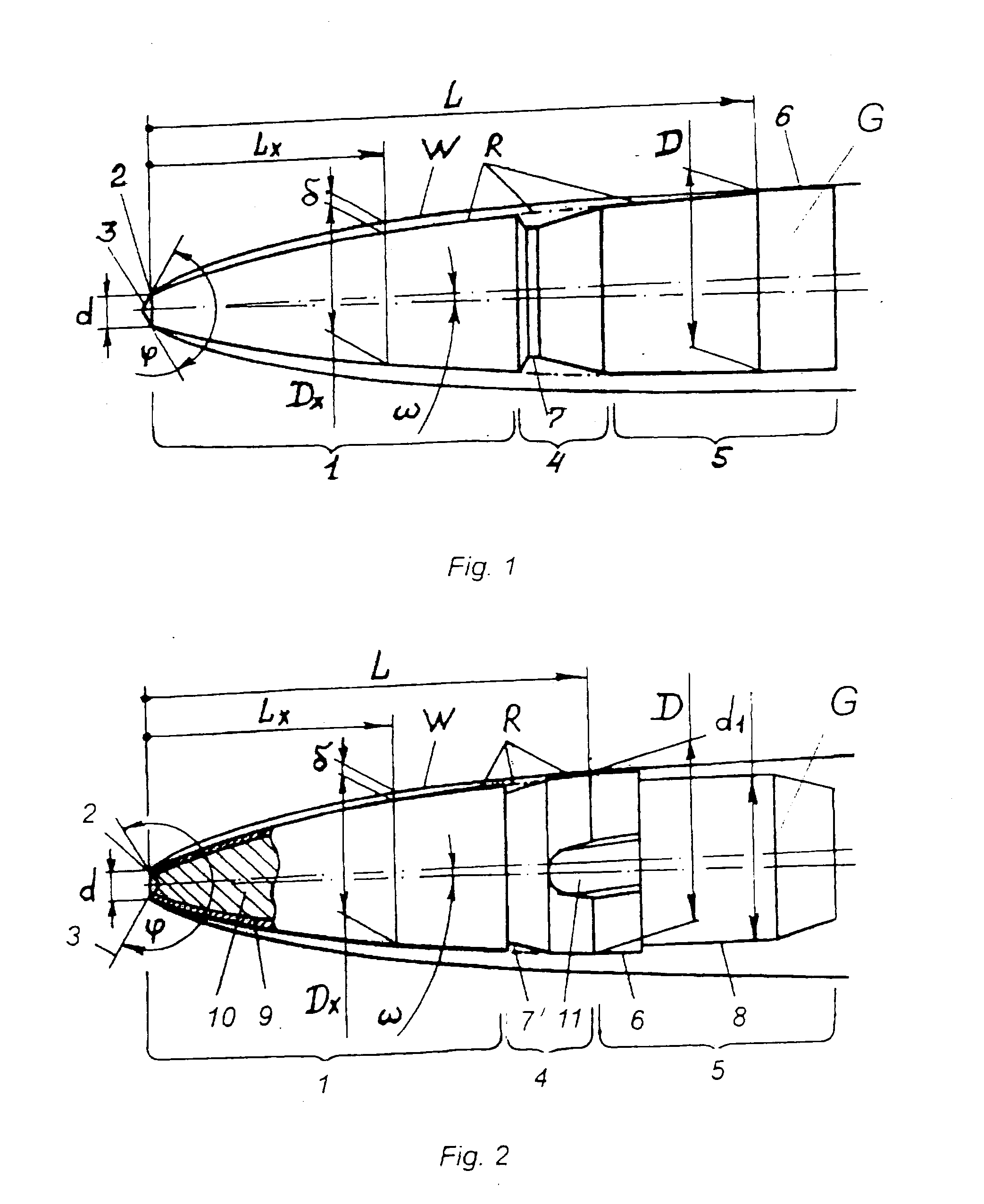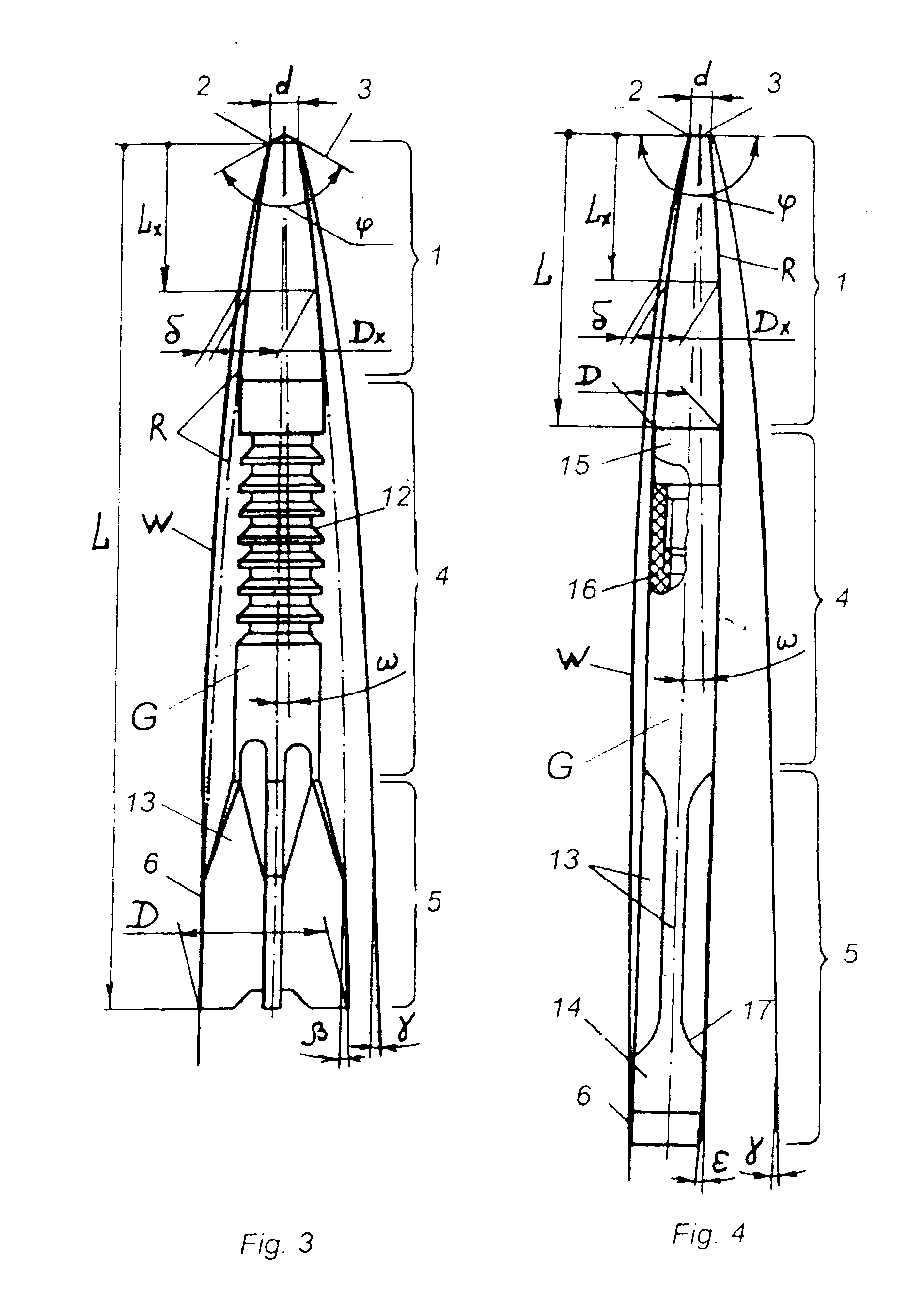Cavitating core
a cavity core and core technology, applied in the field of ammunition for missile weapons and firearms, can solve the problems of oversized cavity cores, lateral surface tumble, and significant angular oscillation, and achieve the effect of increasing the effectiveness of underwater targets hitting
- Summary
- Abstract
- Description
- Claims
- Application Information
AI Technical Summary
Benefits of technology
Problems solved by technology
Method used
Image
Examples
Embodiment Construction
[0050]The cavitating core G consists of a head part 1 conjugated along the cavitating edge 2 having the diameter d with a secant nose surface 3, a central part 4, and an aft part 5 with a cylindrical gliding surface 6. The core caliber D is less than the barrel bore inner diameter measured at rifling fields. To prevent deformation of the conical nose surface 3 its top is rounded. For fixation in a discarding sabot the central part 4 has a groove 7.
[0051]The current diameter Dx of the cavitating core enveloping contour on the current length Lx from the cavitating edge 2 to the caliber D on the length L (excluding groove 7) coincides with the enveloping contour R that corresponds to the function:
[0052]Dx=d×[1+(Lx / d)×(2×sin φ / π)1 / N]N, where: d=1.75 mm, φ=90°, N=0.50.
[0053]The cavitating core contour R and the cavity contour W match in such a way that in the cavity the core rotary angle ω makes up less than 1.8°, and between the contour W and the core contour R there retains a gap δ of ...
PUM
 Login to View More
Login to View More Abstract
Description
Claims
Application Information
 Login to View More
Login to View More - R&D
- Intellectual Property
- Life Sciences
- Materials
- Tech Scout
- Unparalleled Data Quality
- Higher Quality Content
- 60% Fewer Hallucinations
Browse by: Latest US Patents, China's latest patents, Technical Efficacy Thesaurus, Application Domain, Technology Topic, Popular Technical Reports.
© 2025 PatSnap. All rights reserved.Legal|Privacy policy|Modern Slavery Act Transparency Statement|Sitemap|About US| Contact US: help@patsnap.com



